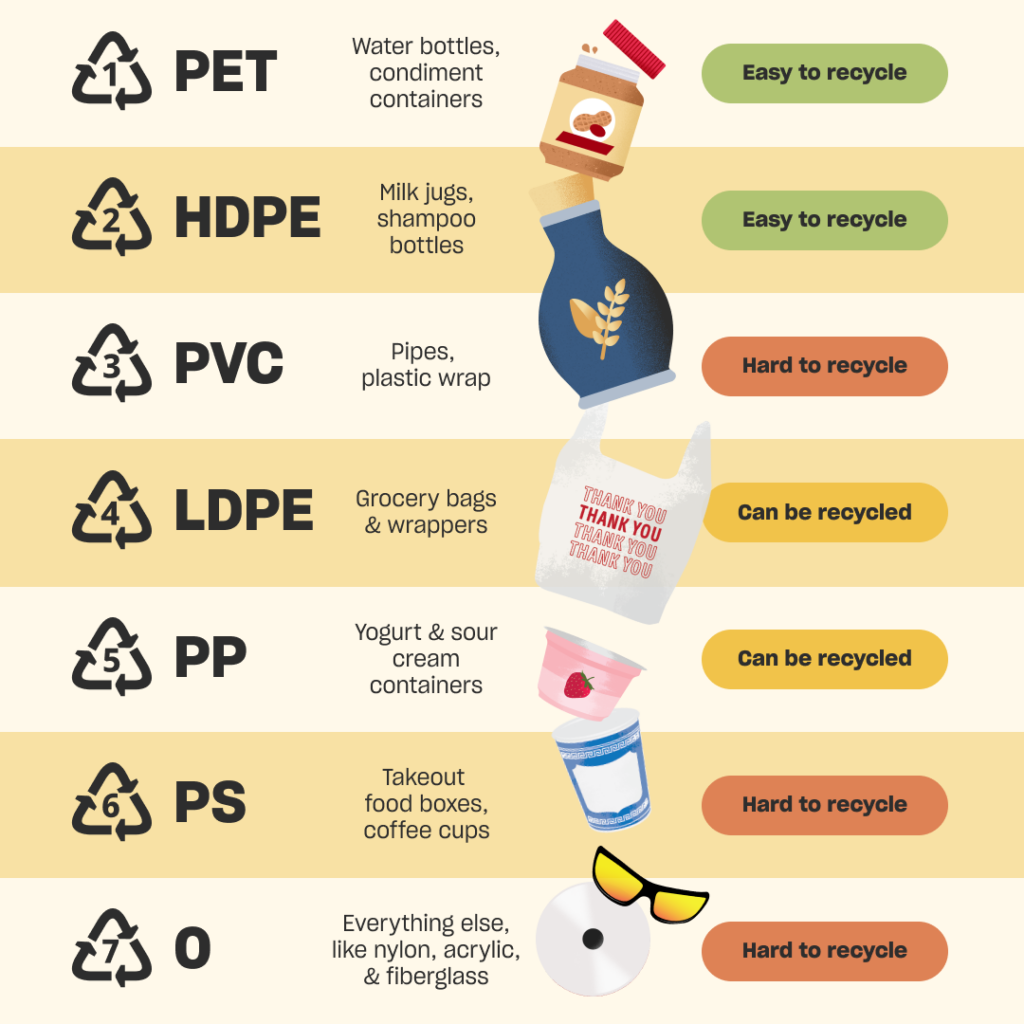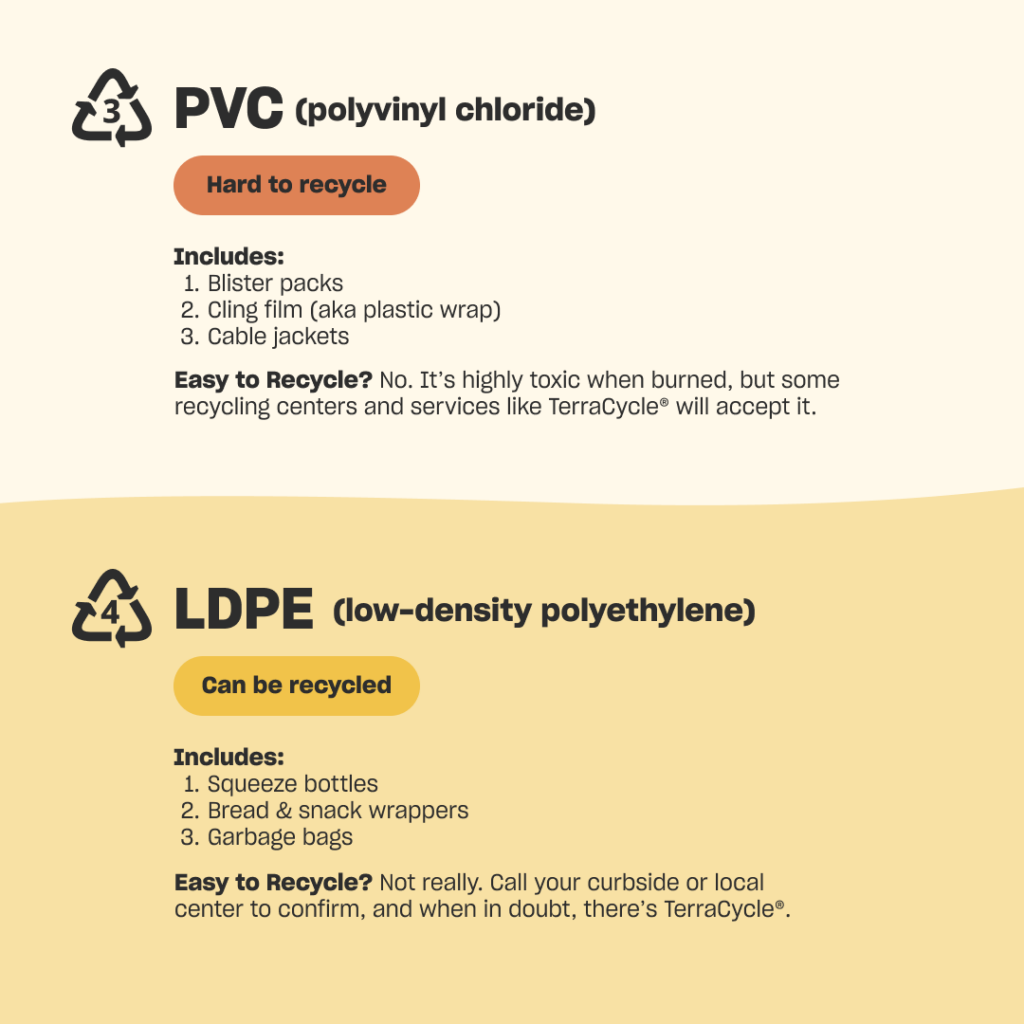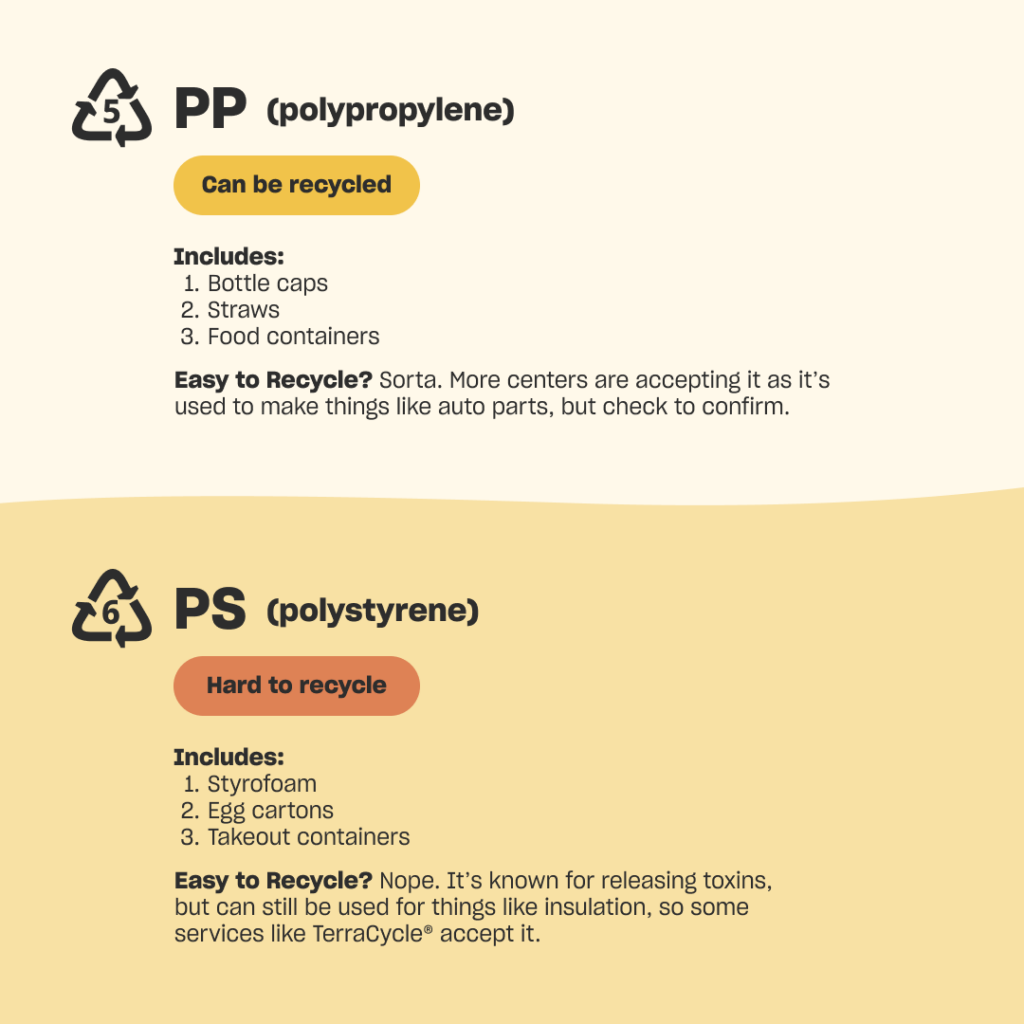Plastic comes in many shapes, sizes, textures, and colors, so it makes sense that there’s almost as many ways to recycle it. The problem: Knowing whether that yogurt container should go in the blue bin isn’t just a matter of checking for a recycling symbol.
In addition to using fewer single-use plastics, recycling is a small yet powerful step we can take to help curb plastic waste. So in honor of Global Recycling Day on March 18th, we teamed up with the Stasher team to break down what to do with plastic items in your home once you’re done with ‘em.
What’s that little number in the middle of the recycling symbol?
First things first: It’s important to remember that even if an item has the recycling symbol on it, it’s not necessarily recyclable—it simply specifies what kind of plastic it’s made from. The most common types you’ll see are #1 (PETE) and #2 (HDPE), and the numbers continue through #7 (more on this later).

Not all kinds of plastic are recyclable in every area; rather, it varies from state to state or even town to town. It’s only natural to get confused about what can and can’t be recycled in your area, but thankfully reading up on your local recycling guidelines takes just a few minutes.
What does each recycling number mean?




But what about plastic food storage bags?
As convenient as they are for freezing leftovers, keeping greens fresh, and snacking on-the-go, single use plastic bags are rarely accepted at general recycling centers. And while a few independent programs accept them along with plastic wrapping and plastic handle bags, finding collection points can be tricky. But what if you could just cut them out in the first place? Thanks to Stasher’s reusable, dishwasher (and oven!) safe storage bags and bowls, now you can. Check out the colorful lineup.
Sign up now to order groceries online with Misfits Market!
